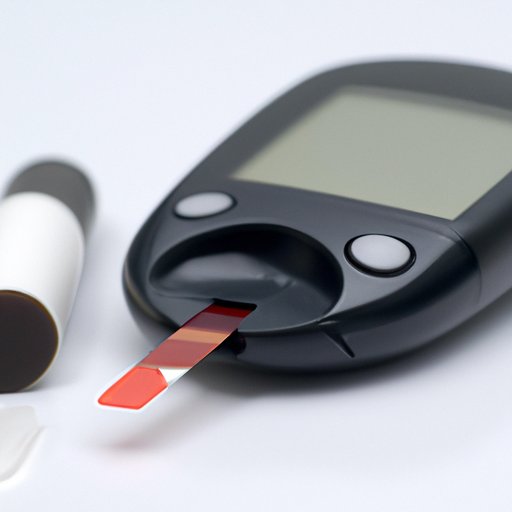
Introduction
Checking your blood sugar regularly may not be the most enjoyable activity, but it is essential for managing diabetes and maintaining overall health. Blood sugar, or glucose, is the primary source of energy for cells in our body. When levels are too high or too low, it can lead to serious health complications. This article provides a step-by-step guide to checking blood sugar, as well as information on the different types of tests available, recommended frequency, and tips for accurate readings.
Why Check Blood Sugar Regularly?
High blood sugar levels, also known as hyperglycemia, can damage your blood vessels, nerves, and organs over time. Consistent hyperglycemia can increase your risk of developing complications such as heart disease, kidney disease, and nerve damage. Conversely, low blood sugar levels, or hypoglycemia, can also be dangerous and lead to seizures or fainting. Monitoring blood sugar levels regularly can prevent these complications and help individuals manage their diabetes.
Step-by-Step Guide for Checking Blood Sugar Levels
Checking your blood sugar requires a glucometer, lancet, and test strips. Before starting, wash your hands with soap and water and dry thoroughly. Insert a fresh lancet into the glucometer. Then, insert a test strip into the glucometer and prick the side of your finger with the lancet. Place the blood on the test strip and wait for the meter to display your reading. Don’t forget to record your results in a logbook or app to track trends over time!
Understanding the Different Types of Blood Sugar Tests
The three most common types of blood sugar tests include fasting plasma glucose test, oral glucose tolerance test, and hemoglobin A1C test. The fasting plasma glucose test measures blood sugar levels after at least 8 hours of fasting. The oral glucose tolerance test measures blood sugar levels two hours after consuming a sugary drink. The hemoglobin A1C test measures average blood sugar levels over the past three months.
How Often Should You Check Your Blood Sugar?
The frequency of blood sugar checks may vary depending on factors such as age, activity level, and overall health. However, it is generally recommended to check your blood sugar before meals and before bedtime. Your healthcare provider may recommend more frequent checks, especially if you are newly diagnosed or making changes to your diabetes management plan.
Tips for Accurate Blood Sugar Readings
It’s important to obtain accurate blood sugar readings to ensure proper diabetes management. Factors such as exercise, stress, food, and medication can all affect readings. Before checking your blood sugar, make sure your hands are clean and dry. It can also help to massage the area you plan on using to increase blood flow. Inaccurate readings may also be due to malfunctioning equipment or expired test strips, so ensure your supplies are in good condition.
Interpreting Your Blood Sugar Results
Blood sugar levels are measured in milligrams per deciliter (mg/dL) or millimoles per liter (mmol/L). According to the American Diabetes Association (ADA), normal blood sugar levels range between 80-130 mg/dL before meals and less than 180 mg/dL two hours after starting a meal. However, your individual target range may vary depending on factors such as age, overall health, and diabetes management plan. Tracking blood sugar trends over time can provide insight into how lifestyle or medication changes are affecting your levels.
The Consequences of Not Checking Your Blood Sugar Regularly
The consequences of not monitoring blood sugar levels regularly can be serious. While hyperglycemia can lead to complications such as blindness, nerve damage, and kidney disease, hypoglycemia can cause confusion, seizures, and loss of consciousness. Consistently high or low levels can also put individuals at risk for heart disease and stroke. By monitoring blood sugar levels regularly, individuals can take steps towards preventing these complications and maintain overall health.
Conclusion
Checking your blood sugar regularly may not be the most enjoyable activity, but it is essential for managing diabetes and maintaining overall health. By understanding the importance of monitoring blood sugar levels, following a step-by-step guide, and tracking trends over time, individuals can take control of their diabetes and prevent long-term complications. Don’t forget to consult with a healthcare provider for additional guidance on managing diabetes.





